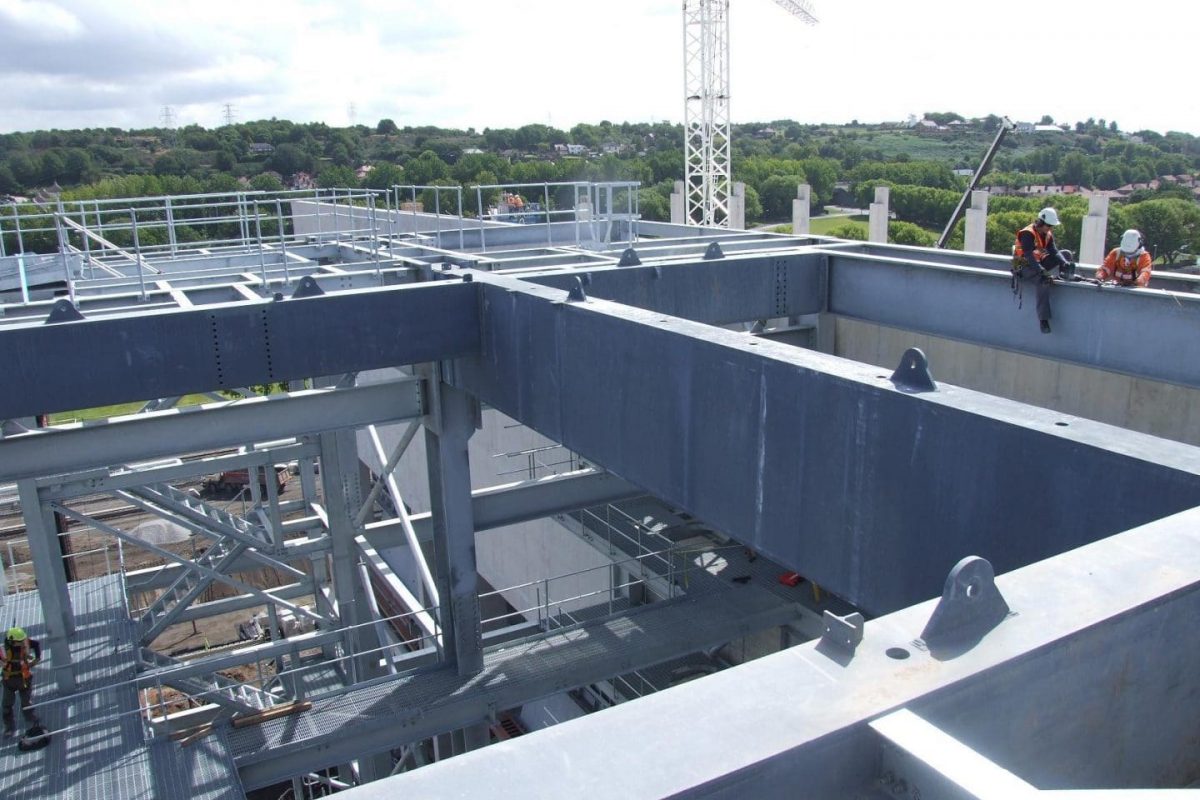Completed in 2012, the Thermal Power Station is one of the largest Energy from Waste facilities in the UK. TPS Runcorn has the capability to treat up to 810,000 tonnes per year of solid recovered fuel which is derived from household waste. This reaches the site by both road and rail. At full capacity Runcorn can supply some 174,000 MWth and export 100MW of electricity and 500,000 tonnes of steam per year. Above all, this power goes into the internal network of the neighbouring Ineos Runcorn site.
Specification
The £185 million Runcorn Thermal Power Station was designed using a unique combination of hot-dip galvanized beams and cold galvanized beams. They require cold galvanizing as they would not be able to place the 66 box-section beams into a HDG tank.
They require cold galvanizing by Zinga 96% because:
- The box-beams require large drill holes to be made every linear metre for de-gassing
- The potential for distortion during the dip at 450°C is extremely high. Each beam has 22 mounting holes drilled either end. Even distortion of 2mm would cause tremendous problems during erection.
- If the molten zinc did not drain out of the degassing holes it would have added a great deal of weight.
As the upright HDG beams and the vertical film-galvanized box-beams are both zinc coated with both identical “open-circuit” electrical potentials of 1040mV, there is no danger of any galvanic reactions on any part of the structure.
At a cost of €185 million, this is the first major project in the UK where a combination of hot-dip galvanized and film-galvanized steelwork is to be assembled into a single structure. It clearly illustrates that the electrical potentials of the two zinc’s are well-balanced. Therefore, due to the processes, one beam will never go anodic to another and hence no galvanic corrosion can occur.
About Zinga
First of all, Zinga is a unique system that you can use as an alternative to hot-dip galvanization or metallisation.
Zinga Film Galvanizing System is a single pack coating that contains 96% zinc to provide cathodic protection of ferrous metals. You can use this product as an alternative to hot-dip metallisation. Also you can use it as primer in a duplex system (active and passive) or as a recharging system for hot-dip galvanization. Or even metallisation or Zinganised surfaces. You can apply Zinga on site, avoiding the need for dismantling ferrous metal structures, forming a grey matt, non toxic finish. Zinga conforms to ISO standard 3549 in regard to its zinc purity of 99.995% as well as to ATM standard A780 in regard to its use as a repair coating for hot-dip galvanization. You can over coat Zinga with a compatible paint.
Example Uses of Zinga Cold Galvanized Paint
Use Zinga for the protection of ferrous metal structures such as bridges, a primer for boat keels, pylons, masts, street furniture, etc.
- London Underground Approved
- Certified for use with potable water (BS 6290 2000)
- Certified as non-flammable (BS476 parts 6 & 7 : fire propagation and surface spread of flame)
- NORSOK standard M-501 Revision 5 approved
Cold Galvanized System
After in depth discussion with the technical team at Zinga the final system consisted of:
Blast-clean all steelwork to SSPC-SP10 (SA2.5)
Application of 2 coats of Zinga 96% Zinc Cathodic Protection at 70μm dry film thickness = 140μm total
Below are images of the construction of the Thermal Power Station at Runcorn. Here you can see the cold galvanized columns against the standard hot dip galvanized beams:
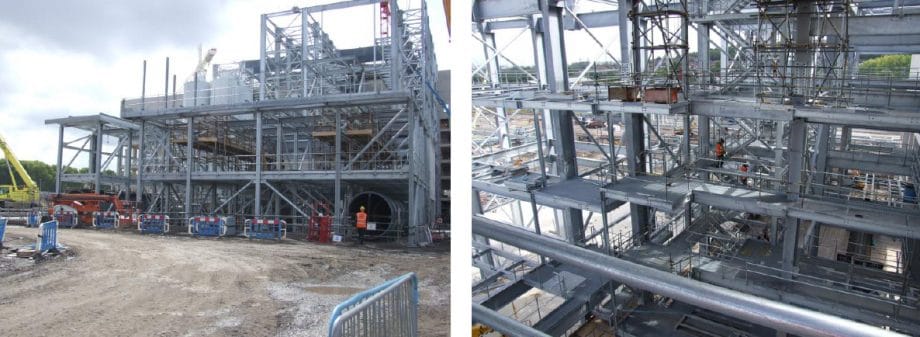
Right: An aerial view of the steelwork showing the different levels
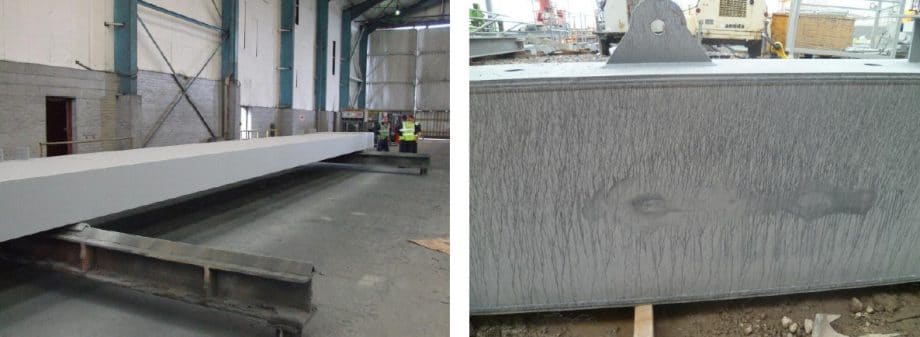
Right: One of the beams after it rained on site showing oxide streaks
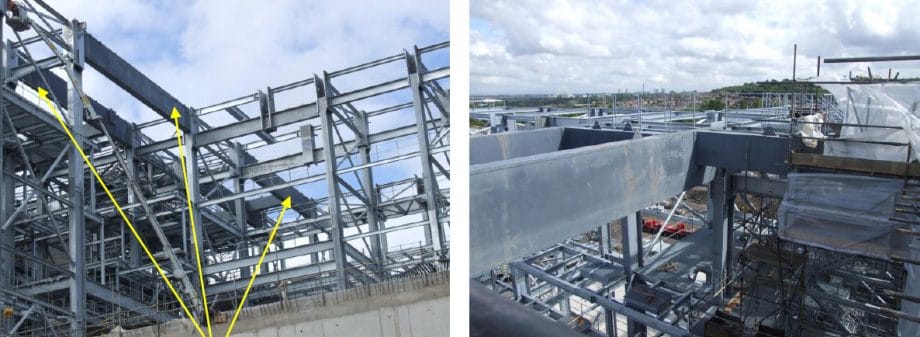
Right: A view of the Zinganised beams from above
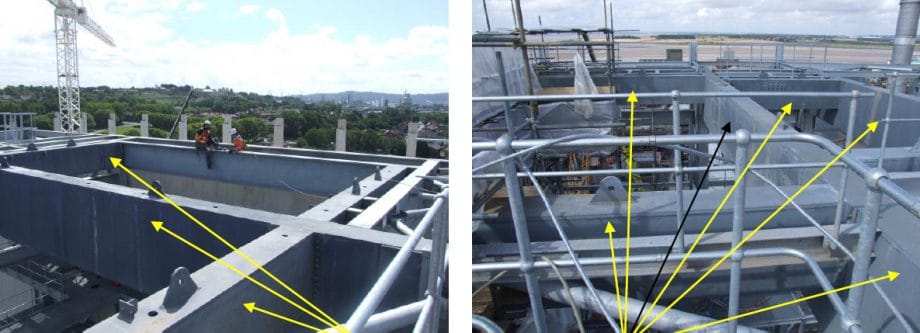
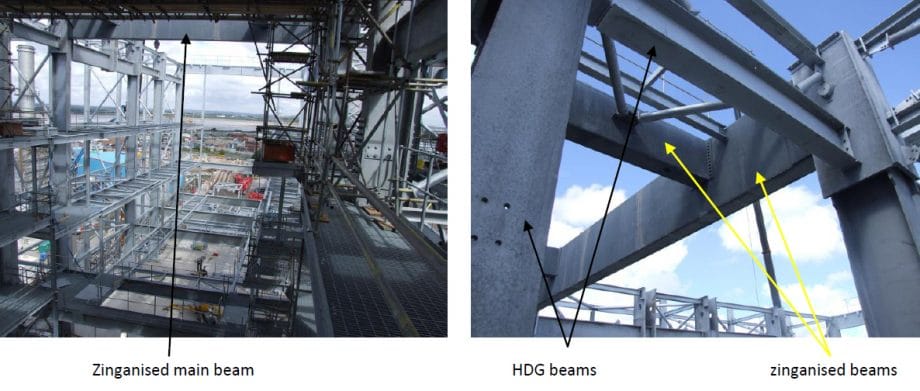

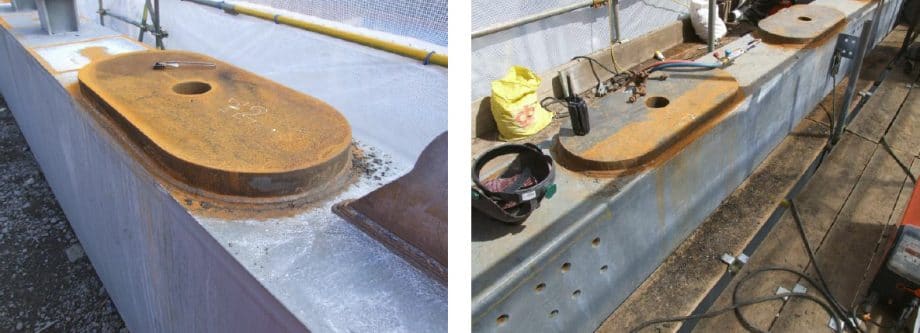
Finally, the complete Zinganised beams are put into place. The above 40mm plates can then be add on by the client. Furthermore, the plates will be ‘bristle-blasted’ in-situ and then they apply a coat of Zinga as normal. The contractors have four 110 volt bristle-blasters on site.

